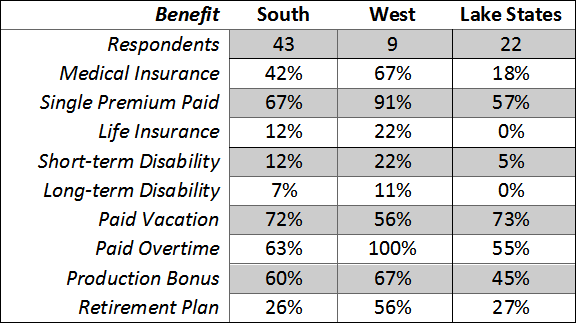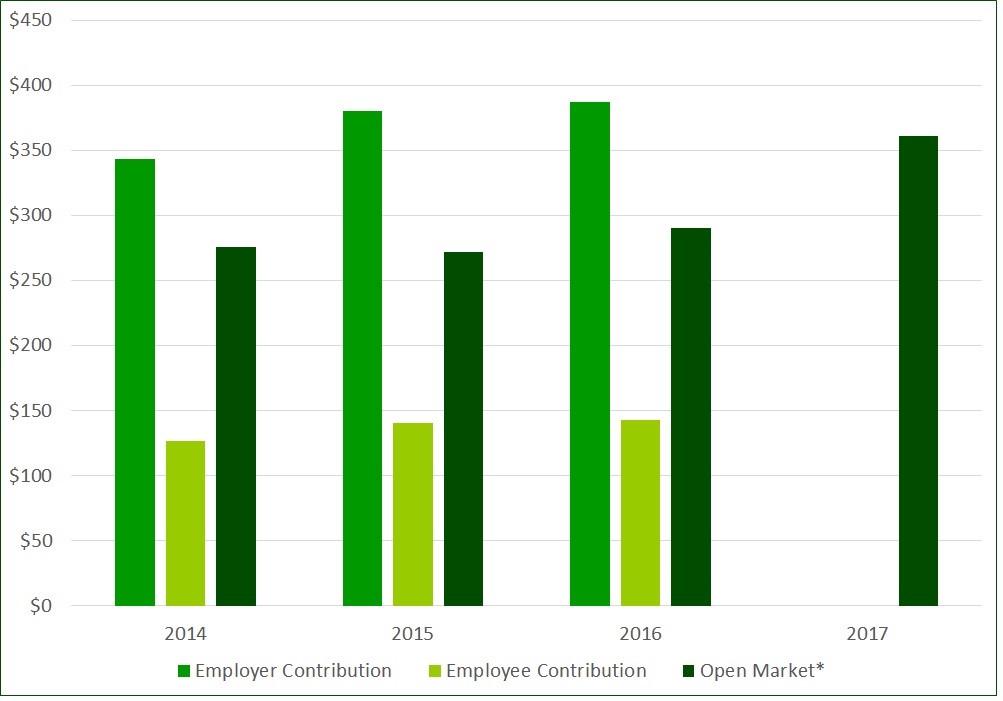With the impending vote on the American Health Care Act, there has been a tremendous amount of ink spilled regarding the cost of health insurance and its role in the economy. As the debate continues, I try to think about how all of this affects the forest industry, particularly the small logging businesses which serve as a key link in the wood supply chain. Forisk recently completed a salary and benefits survey of the logging industry funded by the Wood Supply Research Institute which allows us to estimate some of those impacts.
Proportion of logging businesses offering benefits regionally in the U.S.

Nationally, only 37% of logging businesses provide access to health insurance for their employees. On average, they cover 73% of a single enrollee’s premium. As you can see in the table above, the level of benefits actually varies quite a bit by region, with West Coast operations reporting greater access to health insurance (though with fewer survey respondents out west). If we combine the national average access and contributions with Kaiser Family Foundation’s estimates of insurance premiums by year for small businesses, we can see the estimated impact of health insurance costs per employee on logging businesses.
Average logging business and employee contribution to monthly health care premiums and benchmark premiums on Affordable Care Act exchanges. Sources: Kaiser Family Foundation, Forisk Consulting

*Open market premiums for silver-level plans in states which participated in the logging benefits survey
With only one-third of businesses affected, it doesn’t look like a big part of the story, though costs have been trending upwards. With two-thirds of logging employees not covered by their employer, you could also argue just the opposite. Access to health insurance for those without coverage from their employer who earn over 138% of the poverty line (roughly $16,000) are participants on the exchanges created by the Affordable Care Act or are uninsured. As has been widely reported, premiums in the open markets are on the rise. This puts pressure on the industry as a whole. If employees are feeling the pinch in their pockets over the cost of their health care, they may look elsewhere for employment. The level of benefits become a competitive advantage when seeking to recruit and retain quality employees. In a business like logging, which is increasing employment to match growing demand, being competitive matters.

Leave a Reply